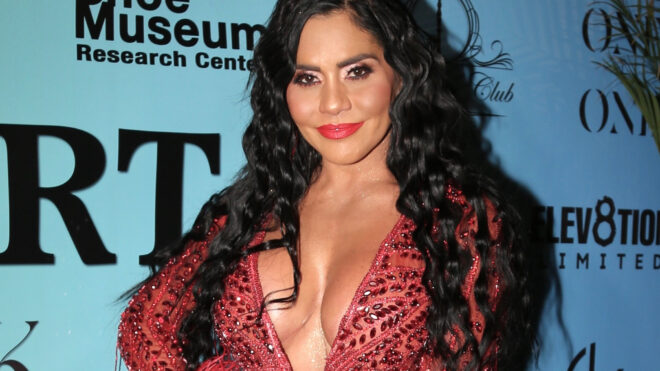There are so many things to consider when getting a tattoo. Among other things, you will need to decide where you want it placed on your body, how large or small you want it to be and then there's the whole subject matter to consider. What should it be? You don't want it to be something you'll regret, so you should get something that will always be meaningful to you. And what could be more meaningful than your ties to your indigenous predecessors.
More from MamásLatinas: 40 Gorgeous tattoos that show you are a proud Latina
Latinos are blessed with a long history in the lands that we now know as the Americas. A history that started long before European ships ever set sail and then claimed to "discover" lands that were already populated by great civilizations. A history that predates the introduction of the Spanish language, Catholicism and so many other things that we've come to associate as part of many Latino cultures. A history that continues to be told and kept alive by the surviving art and ruins of the pre-Columbian cultures that once thrived in Mesoamerica and South America.
We've put together a wide array of tattoos inspired by our pre-Columbian ancestors that are not only beautiful to look at, but also a beautiful way to keep telling that part of our history. The part of our history that makes us proud of our indigenous roots and that informs what it means to be Latino.
Deities are always an option.
This is Ehecatl-Quetzalcoatl, the Aztec god of wind.
This is the center of the calendar stone.
The very middle of the Aztec calendar stone has a face on it that many interpret to be Tonatiuh, the sun god.
This is Xochipilli.
Xochipilli is the god of art, games, beauty, dance, flowers and song in Aztec mythology.
A gorgeous rendition of Quetzalcoatl.
Feathered serpent deities were prominent in many Mesoamerican cultures. The Aztecs referred to this deity as Quetzalcoatl.
A feathered serpent by another name.
Kukulkan is the name of the Maya feathered serpent.
This little guy is a death bat.
The Camazotz bat god symbolizes death, sacrifice and night for the Maya.
It's a tumi.
This tattoo is a depiction of a tumi, a Peruvian ceremonial knife made of bronze, gold, silver or copper.
Who is that on the tumi?
It is believed that the figure depicted on the tumi is the Lambayque god Naymlap.
Be inspired by Aztec representations of animals.
Animals play a large role in the symbolism of Aztec culture.
How can you tell this is Tlaloc?
The goggle-like eyes on this fella are a dead giveaway that he is Tlaloc, the Aztec storm god.
Let's not forget the jaguar goddess.
Ixchel, is the Mayan goddess of medicine and midwifery.
Keep it simple.
If you prefer simple imagery with clean lines, then perhaps an ode to a bird symbol is the tattoo for you.
Bird symbolism runs deep.
The Incas believed that birds were able to cross between earthly and spiritual boundaries.
Condors were sacred to the Incas.
Of all the birds, the Incas considered the condor to be the most sacred. It was a messenger from the heavens.
Why so many birds?
Perhaps the Incas used so much bird imagery because they inhabited an area of South America that is home to a huge array of birds.
The ruler of the underworld.
In Mayan mythology the jaguar is the ruler of the underworld and represents fierceness, power and courage.
Another mighty jaguar.
It wasn't just the Maya who worshiped the jaguar. All the major Mesoamerican societies had a jaguar deity.
Great conversation starter.
When you have a tattoo like this, someone is bound to ask "What is that and what does it mean?" It's a great way to share a bit of history with others.
Let the sun be your compass.
This design incorporates the four directions and a sun symbol.
Shout out to Cuactéhmoc.
Cuactéhmoc was the last Aztec emperor. His rule, from 1520-1521, was short.
The last emperor of the Incas.
Atahuallpa, was the 13th and last emperor of the Inca empire. He reigned from 1532-1533.
This is Pacal the Great as depicted on his sarcophagus.
The figure represented in the center of this image is K'inich Janaab' Pakal AKA Pacal the Great. He was the ruler of Palenque in what is now Chiapas, Mexico from the year 615 until his death in 683.
The Aztecs were a warrior society.
The Aztecs were a warrior society. They maintained and expanded their empire through warfare or the threat of warfare.
The Maya were warriors, too.
Unlike the Aztecs or Incas, the Maya did not have a centralized government or center of power. They were more like city-states.
Another representation of a Mayan warrior.
The Maya people of different city-states were linked together by language, trade and a similar culture, but that did not stop them from waging war against each other.
A speedy messenger.
What one would imagine a light-footed Inca messenger looked like.
Create a necklace for yourself.
You can use symbols and imagery from indigenous cultures to create necklace-style tattoo like this one.
Ancient and contemporary worlds come together.
You can add contemporary elements while paying tribute to ancient cultures.
This couple got tattoos that go together.
Each tattoo looks great on its own and when they come together, it's like they are gazing into each other's eyes.
Can't decide on just one design?
Line up the pre-Columbian imagery up and down your leg, arm or torso.
A pre-Inca clava head.
A cabeza clava is a large monolith created by the Chavín culture which predates the Incas.
The Andean cross is deceptively simple.
The Chakana or Inca Cross looks so simple, but it represents the four cardinal directions, the four elements and the three tiers of Inca life.
Inspiration and your imagination for the win.
Take your time coming up with an ode to your indigenous roots that weaves your own aesthetic into the design.
It's a numbers game.
This tattoo incorporates the symbol for the number 12.
Because we are all a part of a greater whole.
This particular design includes a fractal pattern that could go on forever. The Maya believed that we were all part of a larger unified whole. When they would greet each other one would say, "LAK'ECH," which means "I am your other you." The other would respond, "HALA KEN," which means "You are my other me."
The Mayan writing system.
The Mayan writing system is composed of hundreds of intricate glyphs.
A layering of history.
There are so many layers to this tattoo. It calls to mind the Day of the Dead celebration, which is a combination of indigenous and Catholic traditions. The indigenous roots are seen in the eyes and forehead of this skull that harken back to Pre-Columbian times.
The jade masks of the Maya.
The Maya made incredible jade mosaic death masks for the tombs of deceased royalty.
Do you know during which month in the Maya you were born?
This is the glyph for Zac that corresponds to February 27-March 17.
Wear your pride on your sleeve.
Latinos in the Americas have a long and rich culture that should be proudly displayed. Why not show it off prominently?




